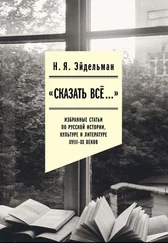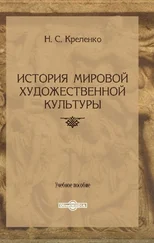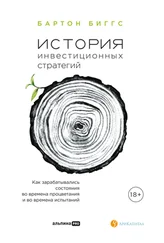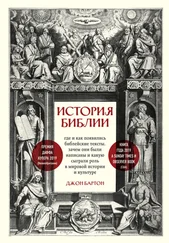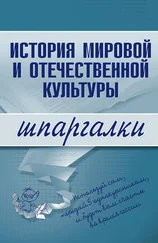Humphreys, Colin J., The Mystery of the Last Supper: Reconstructing the Final Days of Jesus (Cambridge: Cambridge University Press, 2011).
Israel, Jonathan (ed.), Spinoza: Theological-Political Treatise (Cambridge: Cambridge University Press, 2007).
Jackson, Bernard S., Wisdom-Laws: A Study of the Mishpatim of Exodus 12:1–22:16 (Oxford: Oxford University Press, 2006).
Jamieson-Drake, D. W., Scribes and Schools in Monarchic Judah: A Socio-Archaeological Approach (JSOTSup, 109) (Sheffield: Almond Press, 1991).
Jarick, John (ed.), Sacred Conjectures: The Context and Legacy of Robert Lowth and Jean Astruc (New York and London: T&T Clark, 2007).
The Jewish Study Bible , ed. A. Berlin and M. Z. Brettler (Oxford and New York: Oxford University Press, 2004, 2 nded., 2014).
Johnson, Byron and Isserman, Nancy (eds), Uneasy Allies: Evangelical and Jewish Relations (Lanham, Md.: Lexington Books, 2007).
Kartveit, Magnar, The Origin of the Samaritans (Leiden: Brill, 2009).
Kasher, Rimon, ‘The Interpretation of Scripture in Rabbinic Literature’, in M. J.
Mulder (ed.), Mikra: Text, Translation, Reading and Interpretation of the Hebrew Bible in Ancient Judaism and Early Christianity (Assen: Van Gorcum, 1988), pp. 547–594.
Kelley, Page H., Mynatt, Daniel S. and Crawford, Timothy G., The Masorah of Biblia Hebraica Stuttgartensia : Introduction and Annotated Glossary (Grand Rapids, Mich. and Cambridge: W. B. Eerdmans, 1998).
Kennedy, Philip, A Modern Introduction to Theology: New Questions for Old Beliefs (London and New York: I. B. Tauris, 2006).
Kermode, Frank, The Genesis of Secrecy: On the Interpretation of Narrative (Cambridge, Mass. and London: Harvard University Press, 1979).
King, Karen L., The Gospel of Mary of Magdala: Jesus and the First Woman Apostle (Santa Rosa, Cal.: Polebridge Press, 2003).
Kingsmill, Edmée, The Song of Songs and the Eros of God (Oxford: Oxford University Press, 2009).
Klauck, H.-J., Ancient Letters and the New Testament: A Guide to Context and Exegesis (Waco, Tex.: Baylor University Press, 2006).
Knox, John, Chapters in a Life of Paul (New York: Abingdon Press, 1950; 2 nded., London: SCM Press, 1987).
Kratz, Reinhard G., The Prophets of Israel (Winona Lake, Ind.: Eisenbrauns, 2015).
Krey, Philip D. W. and Smith, Lesley (eds), Nicholas of Lyra: The Senses of Scripture , in Heiko A. Oberman (ed.), Studies in the History of Christian Thought, 90 (Leiden, Cologne and Boston: Brill, 2000).
Kugel, James L., The Idea of Biblical Poetry: Parallelism and Its History (Baltimore and London: Johns Hopkins University Press, 1998).
The Ladder of Jacob: Ancient Interpretations of the Biblical Story of Jacob and his Children (Princeton and Oxford: Princeton University Press, 2006).
and Greer, Rowan A., Early Biblical Interpretation (Philadelphia: Westminster Press, 1986).
Kuss, O., ‘Über die Klarheit der Schrift: Historische und hermeneutische Überlegungen zu der Kontroverse des Erasmus und des Luther über den freien oder versklavten Willen’, in Theologie und Glaube , 60 (1970), pp. 273–321, reprinted in J. Ernst (ed.), Schriftauslegung: Beiträge zur Hermeneutik des Neuen Testamentes und im Neuen Testament (Munich: Schöningh, 1972), pp. 89–149.
LaHaye, Tim and Jenkins, Jerry B., Left Behind (Wheaton, Ill.: Tyndale House, 1995).
Lambe, P. J., ‘Critics and Skeptics in the Seventeenth-Century Republic of Letters’, Harvard Theological Review , 81 (1988), pp. 271–296.
Lambert, Wilfred G., Babylonian Wisdom Literature (Winona Lake, Ind.: Eisenbrauns, 1996).
Lampe, G. W. H., ‘The Exposition and Exegesis of Scripture: To Gregory the Great’, in The Cambridge History of the Bible , vol. 2, pp. 155–183.
Lauterbach, Jacob Z., Mekhilta de-Rabbi Ishmael (Philadelphia: The Jewish Publication Society of America, 1933).
Law, Timothy Michael, When God Spoke Greek: The Septuagint and the Making of the Christian Bible (New York and Oxford: Oxford University Press, 2013).
Lawton, David, Faith, Text and History: The Bible in English (New York and London: Harvester Wheatsheaf, 1990).
Leclercq, Jean, ‘The Exposition and Exegesis of Scripture: From Gregory the Great to Saint Bernard’, in The Cambridge History of the Bible , vol. 2, pp. 183–197.
Lemaire, A., Les écoles et la formation de la Bible dans l’ancien Israël (OBO, 39) (Fribourg: Éditions Universitaires; Göttingen: Vandenhoeck & Ruprecht, 1981).
Levenson, Jon D., The Hebrew Bible, the Old Testament, and Historical Criticism: Jews and Christians in Biblical Studies (Louisville, Ky.: Westminster John Knox Press, 1993).
Resurrection and the Restoration of Israel: The Ultimate Victory of the God of Life (New Haven and London: Yale University Press, 2006).
Levine, Étan, ‘The Targums: Their Interpretative Character and Their Place in Jewish Text Tradition’, in Sabo (ed.), Hebrew Bible/Old Testament , vol. 1, pp. 323–331.
Lewis, C. S., Reflections on the Psalms (London: Geoffrey Bles, 1958).
‘The Literary Impact of the Authorized Version’, in C. S. Lewis, They Asked for a Paper (London: Geoffrey Bles, 1962), pp. 26–50.
Lieu, Judith, Image and Reality: The Jews and the World of the Christians in the Second Century (Edinburgh: T&T Clark, 1996).
Christian Identity in the Jewish and Graeco-Roman World (Oxford: Oxford University Press, 2004).
Lim, Timothy H., The Formation of the Jewish Canon (New Haven and London: Yale University Press, 2013).
The Dead Sea Scrolls: A Very Short Introduction (Oxford: Oxford University Press, 2 nded., 2017).
Lindars, Barnabas, New Testament Apologetic: The Doctrinal Significance of the Old Testament Quotations (London: SCM Press, 1961).
Lindsey, Hal, The Late Great Planet Earth (Grand Rapids, Mich.: Zondervan, 1971).
Loewe, Raphael, ‘The “Plain” Meaning of Scripture in Early Jewish Exegesis’, in J. G. Weiss (ed.), Papers of the Institute of Jewish Studies , vol. 1 (Jerusalem: Magnes Press, 1964), pp. 140–185.
Louth, Andrew (ed.), Early Christian Writings: The Apostolic Fathers (London: Penguin, 2 nded., 1987).
Lowth, Robert, Lectures on the Sacred Poetry of the Hebrews (London: 2 nded., 1816).
Ludlow, Morwenna, ‘ “Criteria of Canonicity” and the Early Church’, in John Barton and Michael Wolter (eds), Die Einheit der Schrift und die Vielfalt des Kanons / The Unity of Scripture and the Diversity of the Canon , Beihefte zur Zeitschrift für die neutestamentliche Wissenschaft und die Kunde der älteren Kirche, 118 (Berlin: W. de Gruyter, 2003), pp. 69–93.
The Complete Sermons of Martin Luther , ed. John Nicholas Lenker and Eugene F. A. Klug (Grand Rapids, Mich.: Baker, 2000).
MacCulloch, Diarmaid, Reformation: Europe’s House Divided, 1490–1700 (London: Allen Lane, 2003).
Magonet, Jonathan, Bible Lives (London: SCM Press, 1992).
Malone, Andrew, Knowing Jesus in the Old Testament? A Fresh Look at Christophanies (Nottingham: Inter-Varsity Press, 2015).
Marty, Martin L., ‘America’s Iconic Book’, in G. Tucker and D. Knight (eds), Humanizing America’s Iconic Book: Society of Biblical Literature Centennial Address, 1980 (Chico, Cal.: Scholars Press, 1982), pp. 1–23.
Martyn, J. Louis, History and Theology in the Fourth Gospel (New York: Harper & Row, 1968).
Читать дальше
![Джон Бартон История Библии. Где и как появились библейские тексты, зачем они были написаны и какую сыграли роль в мировой истории и культуре [litres] обложка книги](/books/431685/dzhon-barton-istoriya-biblii-gde-i-kak-poyavilis-bi-cover.webp)
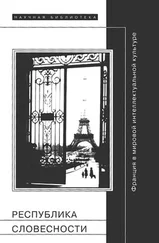
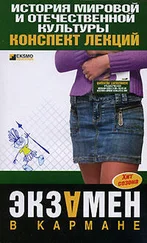

![Джон Херст - Краткая история Европы [litres]](/books/389962/dzhon-herst-kratkaya-istoriya-evropy-litres-thumb.webp)
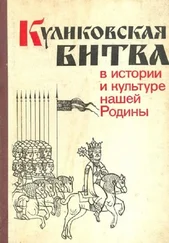
![Джон Норвич - Краткая история Франции [litres]](/books/400778/dzhon-norvich-kratkaya-istoriya-francii-litres-thumb.webp)
